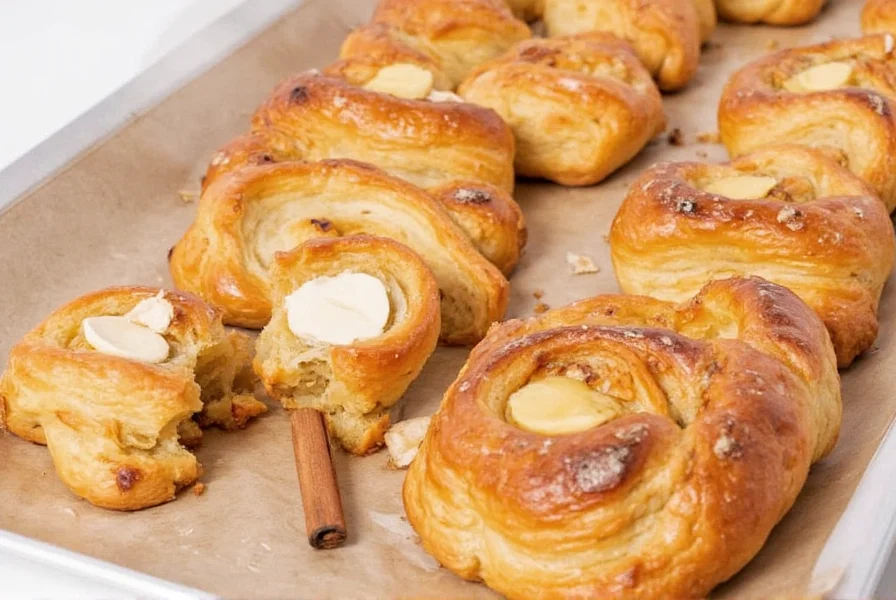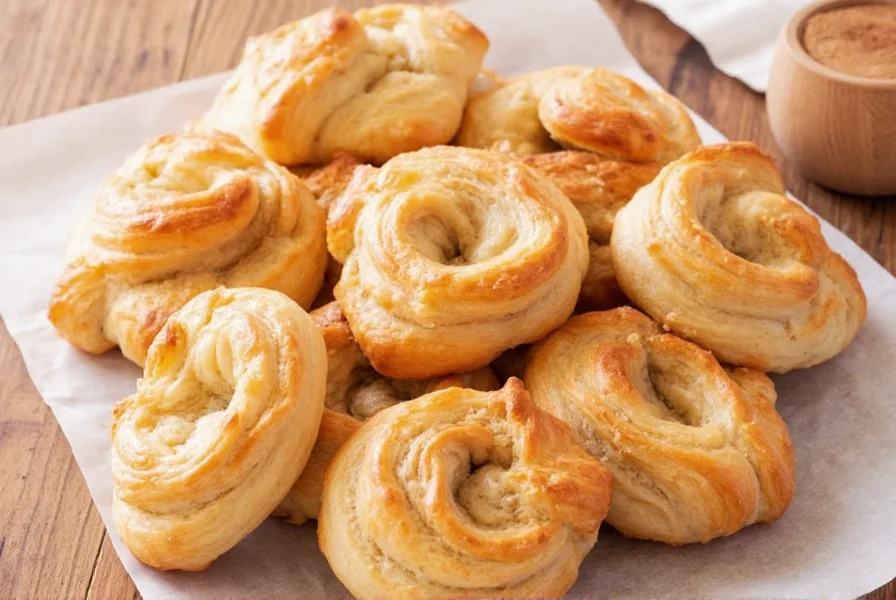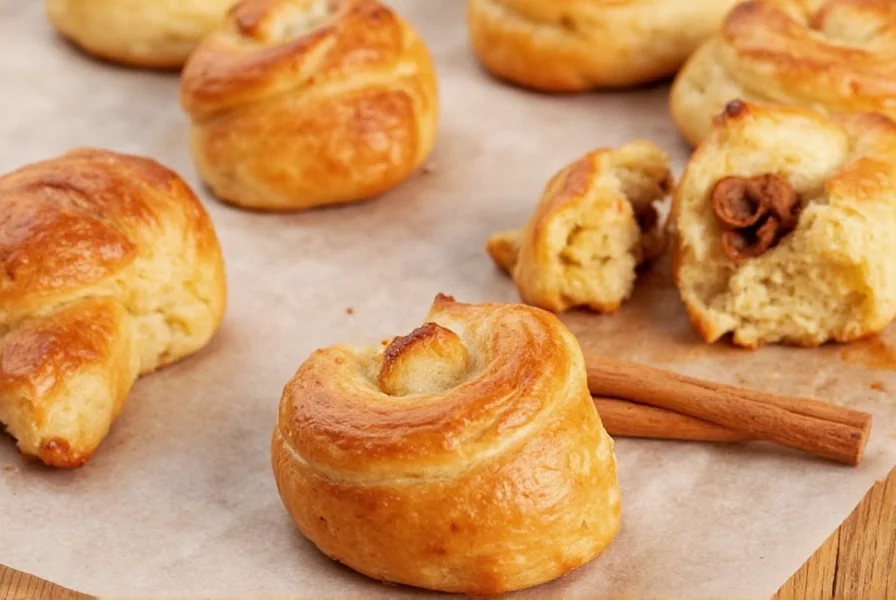Understanding the True Essence of Cinnamon Danish Pastries
When exploring how to identify authentic cinnamon danish pastries, it's essential to recognize the specific characteristics that define this beloved treat. Unlike many imitations found in casual bakeries, a genuine cinnamon danish begins with properly laminated dough that creates dozens of delicate, buttery layers through a meticulous folding process.
The distinctive spiral pattern isn't merely decorative—it serves a functional purpose in distributing the cinnamon filling evenly throughout the pastry. This attention to structural detail represents what makes a perfect cinnamon danish swirl and separates authentic versions from simpler imitations.
Historical Journey: From Danish Kringles to American Favorite
Despite its name, the cinnamon danish as Americans know it today represents a fascinating culinary adaptation. Traditional Danish pastries, or wienerbrød (Vienna bread), were introduced to Denmark by Austrian bakers in the 1850s. Danish bakers refined these techniques, creating their own distinctive laminated pastries.
When Danish immigrants arrived in America, particularly California in the early 20th century, they adapted their recipes using available ingredients. The addition of generous cinnamon-sugar fillings and cream cheese elements transformed the traditional pastry into what we now recognize as the American-style cinnamon danish. This evolution represents one of the most interesting stories behind popular bakery items that many consumers don't realize.
Cinnamon Danish vs. Cinnamon Roll: Clearing the Confusion
Many people wonder about the difference between cinnamon roll and cinnamon danish, as both appear similar at first glance. The distinctions lie in their construction, texture, and ingredient composition:
| Feature | Cinnamon Danish | Cinnamon Roll |
|---|---|---|
| Dough Type | Laminated yeast dough with butter layers | Single-layer enriched yeast dough |
| Texture | Flaky, crisp layers with tender interior | Soft, uniform, cake-like consistency |
| Filling Distribution | Between laminated layers | Throughout the single dough layer |
| Shape | Distinct spiral with visible layers | Tighter spiral, less defined layers |
| Common Additions | Cream cheese filling, pearl sugar | Nuts, raisins, caramel icing |
Essential Components of an Authentic Cinnamon Danish
Creating the best cinnamon danish baking techniques requires attention to several critical elements:
Dough Quality and Lamination
The foundation of any exceptional cinnamon danish is properly executed lamination. This process involves folding butter into the dough multiple times, creating alternating layers of dough and fat. When baked, the water in the butter evaporates, creating steam that separates the layers, resulting in the characteristic flakiness.
Filling Composition
The cinnamon filling should balance sweetness with the warm, complex notes of quality cinnamon. Many professional bakers use a combination of cinnamon varieties to achieve depth of flavor. The ratio of sugar to cinnamon typically ranges from 3:1 to 4:1, depending on regional preferences.
Cream Cheese Element
While not traditional in Denmark, the American-style cinnamon danish often features a ribbon of cream cheese filling. This addition requires careful formulation to prevent excessive moisture that could compromise the delicate laminated structure during baking.

Regional Variations Across the United States
As cinnamon danish became popular across America, regional variations emerged reflecting local tastes and baking traditions:
- Midwest Style: Often features a more generous cinnamon filling and a simple powdered sugar icing
- West Coast Interpretation: Tends toward artisanal approaches with higher butter content and premium cinnamon varieties
- East Coast Version: Frequently includes a richer cream cheese component and more complex icing formulations
- Southern Adaptation: Sometimes incorporates pecans or other local ingredients into the filling
Selecting the Best Cinnamon Danish: A Consumer's Guide
When evaluating where to find the most authentic cinnamon danish experience, consider these quality indicators:
First, examine the pastry's structure. A quality cinnamon danish should display visible layers when viewed from the side. The top should have a golden-brown color with no signs of burning, particularly around the edges where the filling might caramelize.
The aroma provides another important clue—freshly baked cinnamon danishes should emit a complex fragrance combining buttery dough notes with warm cinnamon and subtle sweetness. Avoid pastries with artificial cinnamon smells, which often indicate lower-quality ingredients.
When selecting cream cheese filled cinnamon danish options, check that the cream cheese element appears integrated rather than simply piped on top after baking. Authentic versions incorporate the cream cheese during assembly so it bakes partially into the dough layers.

Appreciating the Craft Behind This Beloved Pastry
The cinnamon danish represents more than just a sweet breakfast option—it embodies a rich tradition of baking craftsmanship that has evolved across continents. Understanding the traditional danish pastry ingredients and techniques helps consumers appreciate the skill required to produce an exceptional version of this deceptively simple-looking pastry.
Whether enjoyed as part of a leisurely weekend breakfast or as an afternoon treat with coffee, the cinnamon danish continues to delight palates with its perfect balance of flaky texture, sweet cinnamon flavor, and satisfying richness. Its enduring popularity speaks to the universal appeal of well-executed baking fundamentals combined with thoughtful adaptation to local tastes.
What distinguishes a cinnamon danish from a regular danish pastry?
A cinnamon danish specifically features cinnamon sugar as its primary filling, often combined with cream cheese. Regular danish pastries might contain fruit fillings, custard, or other ingredients. The cinnamon danish's distinctive spiral shape and cinnamon-focused flavor profile set it apart from other danish varieties.
Why does my homemade cinnamon danish lack flaky layers?
Achieving proper lamination requires careful temperature control. If the butter melts into the dough during preparation or if too many folds are made, the distinct layers won't form. The dough and butter must remain cold but pliable throughout the lamination process for optimal layer separation during baking.
Can cinnamon danish be made without yeast?
Traditional cinnamon danishes use yeast-risen dough for their characteristic texture. While some quick bread versions exist, they lack the authentic flaky, layered structure. The yeast contributes to both the rise and the complex flavor development that defines a proper danish pastry.
How should I store cinnamon danish to maintain freshness?
For optimal freshness, consume cinnamon danishes within 24 hours of baking. If storing longer, keep in an airtight container at room temperature for up to 2 days. For extended storage, freeze the pastries (without icing) and thaw at room temperature, then refresh in a 325°F oven for 5-7 minutes before adding icing.
What type of cinnamon works best for authentic cinnamon danish?
Ceylon cinnamon offers a more complex, nuanced flavor preferred by professional bakers, though it's more expensive. Most commercial bakeries use Cassia cinnamon for its stronger, more familiar flavor and lower cost. Some artisanal bakeries blend both types to achieve balanced flavor complexity.











 浙公网安备
33010002000092号
浙公网安备
33010002000092号 浙B2-20120091-4
浙B2-20120091-4